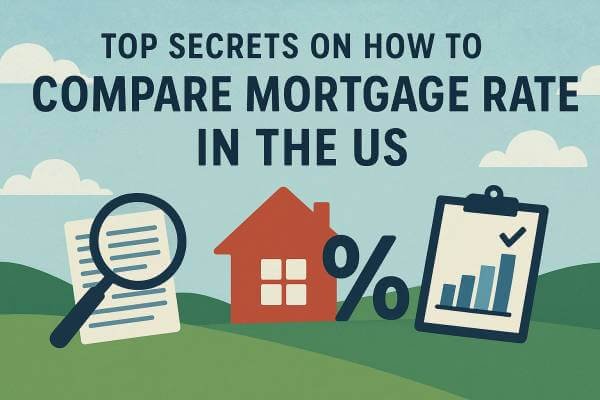How to Choose the Right Personal Loan for Your Financial Goals

With so many personal loan options out there, choosing the right one that actually fits your financial goals can feel overwhelming. Picking the right personal loan isn’t just about snagging the lowest interest rate or the highest amount. It’s about finding a loan that makes sense for you based on your income, your credit score, and what you’re borrowing the money for.
Whether you’re trying to consolidate debt, cover a major expense, or just get a little extra cash flow, the loan terms you agree to today will impact your budget for months or even years. That’s why it’s so important to compare lenders, understand how interest rates work, and make sure the monthly payments fit your lifestyle.
In this article, we’ll break it all down in simple terms so you can feel confident choosing a personal loan that works with your goals instead of against them.
Choosing the Right Personal Loan
There are various steps involved in choosing the right personal loan that will fit your purpose. The following are some important things that you cannot overlook:
1. Understand the Types of Personal Loans Available
Not all personal loans are built the same. To choose the right personal loan, you first need to understand the different types available. Understanding the various types of personal loans available simplifies the process of selecting the one that aligns with your financial objectives.
Let’s start with the basics. Most personal loans fall into one of two categories: secured and unsecured. A secured loan means you’ll need to back it with some kind of collateral, like your car or savings. If you don’t pay it back, the lender can take that asset. On the other hand, an unsecured personal loan doesn’t require any collateral, but you’ll usually need a stronger credit score to qualify, and the interest rates might be a bit higher.
Then you’ve got fixed-rate loans and variable-rate loans. Fixed-rate means your monthly payment stays the same for the life of the loan, which makes budgeting easier. Variable-rate loans can start off cheaper, but the rate (and your payment) can change over time. That’s a risk you’ll want to think through if your income isn’t super flexible.
You’ll also want to consider where the loan comes from. Traditional banks and credit unions offer personal loans, but online lenders have become really popular too. Some online lenders can approve you within minutes and fund your loan by the next day. Just make sure they’re legit and check the fine print.
2. Evaluate Personal Loan Offers
Don’t just focus on the interest rate. What really matters is the APR (Annual Percentage Rate), which includes both the interest rate and any extra fees the lender tacks on. Two loans might have similar rates, but once fees are added in, one could end up costing way more.
Next, take a close look at the loan terms. How long will you be making payments? A longer term usually means lower monthly payments, but more interest paid over time. A shorter term may save you money overall, but only if the monthly amount fits comfortably into your budget.
Speaking of comfort, always double-check for fees. Some personal loans come with origination fees, prepayment penalties, or late payment charges. These can add up fast and completely change the true cost of the loan. The right personal loan should be upfront about these charges, with no sneaky surprises buried in the fine print.
Furthermore, think about how quickly you need the money. Some lenders offer same-day or next-day funding, which is beneficial if your situation is time-sensitive. But fast doesn’t always mean better, so don’t rush into a deal without understanding the full picture.
3. Check Your Credit Score
Before you apply for anything, you’ve got to know where your credit stands. Your credit score plays a giant role in whether or not you’ll get approved for a personal loan, and it directly impacts your interest rate too. In short, lenders use it to figure out how risky it is to lend you money.
The higher your score, the better the offers you’ll get. If your credit score is in excellent shape, you’re more likely to get a lower APR, flexible loan terms, and a bigger loan amount. But if your score needs some work, you might either get denied or end up with sky-high rates that make the loan pricier than it’s worth.
It’s super easy to check. Sites like Credit Karma, Experian, or even your bank usually let you check your credit score for free. It won’t hurt your credit, and it gives you a solid starting point.
If your score’s on the lower side, don’t panic. You can take a little time to boost your credit before applying. Consider reducing credit card balances, ensuring timely payments, and refraining from opening new accounts unless absolutely necessary. Even a small bump in your score can make a big difference when it’s time to lock in the right personal loan.
Knowing your score upfront also helps you avoid applying for loans you won’t qualify for, which can save you from unnecessary credit checks and rejections.
4. Use Loan Comparison Tools and Prequalification Offers
Once you have a clear understanding of your credit score, it’s time to begin your comparison shopping. But don’t worry, you don’t have to visit a dozen bank websites or fill out a bunch of applications. That’s where loan comparison tools are helpful.
These online tools let you see multiple personal loan offers side by side so you can easily compare things like APR, loan terms, fees, and funding speed. Sites like NerdWallet, LendingTree, or Credit Karma are excellent places to start. They’ll show you personalized offers based on your credit profile, and the best part? It usually just takes a few minutes.
Even better, most lenders now let you prequalify for a loan without doing a hard credit check. This means you can see your potential rates and terms using just a soft credit check, which doesn’t hurt your credit score. It’s a smart way to test the waters before you officially apply.
Using these tools is one of the easiest ways to make sure you’re getting the right personal loan without the pressure. You can take your time, review all the details, and avoid offers that don’t fit your needs.
Just be sure to read the fine print and make sure any lender you’re considering is legit. Examine reviews, verify their accreditation, and don’t hesitate to reject offers that appear excessively favourable.
5. Align the Right Personal Loan with Your Budget
Getting approved for a loan feels great, but the real question is this: can you actually afford it? The right personal loan shouldn’t just look good on paper. It has to fit comfortably into your monthly budget without causing stress or forcing you to cut corners elsewhere.
Start by figuring out how much you can safely spend on monthly payments. Don’t just guess. Look at your income, regular bills, and what you typically spend on things like groceries, gas, and fun stuff. Then ask yourself, what can I realistically afford to add on top of that?
Use a basic loan calculator to enter various loan amounts, interest rates, and terms. This will provide you with a clear representation of your monthly payment and the total cost over time. Adjust the numbers until they align with your budget.
Additionally, it’s important to account for an emergency buffer, as unexpected expenses such as car repairs or medical bills can disrupt your finances.
A loan that puts you in a financial bind isn’t the right personal loan, no matter how low the rate is or how fast you’re approved. Go with something you can manage comfortably from day one to the last payment.
When a Personal Loan Isn’t the Right Choice
Personal loans can be super helpful, but they’re not always the answer. Sometimes, taking on new debt just doesn’t make sense for your situation or your long-term financial goals. So before you commit, make sure you’re not using a loan as a quick fix for something that needs a different approach.
If you’re planning to use a personal loan for day-to-day expenses or to cover gaps in your income, pause and reassess. That’s a sign there may be deeper financial issues at play, and borrowing money might just make things harder down the road.
Also, if your credit score is low and the only loan offers you’re seeing have sky-high interest rates, it may be smarter to wait. Spend a few months improving your credit first. A higher score could get you better terms later and save you a lot of money.
There are also times when other financing options might work better. For example:
- Got good credit? A 0% intro APR credit card could be cheaper for short-term expenses
- Own a home? A home equity loan or HELOC may offer lower rates
- Need to buy something small? Maybe saving up is the better move
Ultimately, a personal loan should propel you forward, not hinder you. If the offers don’t seem affordable or the timing doesn’t align, it’s perfectly acceptable to postpone.
Conclusion
Choosing the right personal loan doesn’t have to be overwhelming. When you focus on your financial goals, understand the different loan types, and take time to compare real offers, you’ll end up with a loan that works for you, not against you.
Start by knowing what you want to accomplish. Then look at your credit score, explore your personal loan options, and pay close attention to things like interest rates, monthly payments, and hidden fees. A little prep goes a long way toward saving money and reducing stress.
Remember, the goal isn’t just to borrow; it’s to borrow smart. The right loan should fit into your budget, support your goals, and leave you feeling confident about the path forward.
FAQ
Q1: What is the right personal loan for my financial situation?
A: The right personal loan fits your budget, matches your financial goal, offers a competitive interest rate, and has repayment terms you can manage comfortably.
Q2: How do I compare personal loan offers effectively?
A: Look beyond just the interest rate. Compare APRs, monthly payments, fees, and loan terms using loan comparison tools or prequalification platforms.
Q3: Can I get a personal loan with bad credit?
A: Yes, some lenders offer personal loans for bad credit, but rates may be higher. Improving your credit before applying can help you qualify for better offers.
Q4: What documents do I need to apply for a personal loan?
A: Most lenders require ID, proof of income, employment info, and your address. Having these ready speeds up the approval process.
Q5: Is paying off a personal loan early a good idea?
A: It can save you money on interest if there’s no prepayment penalty. Always check the terms of your loan before making early payments.
























